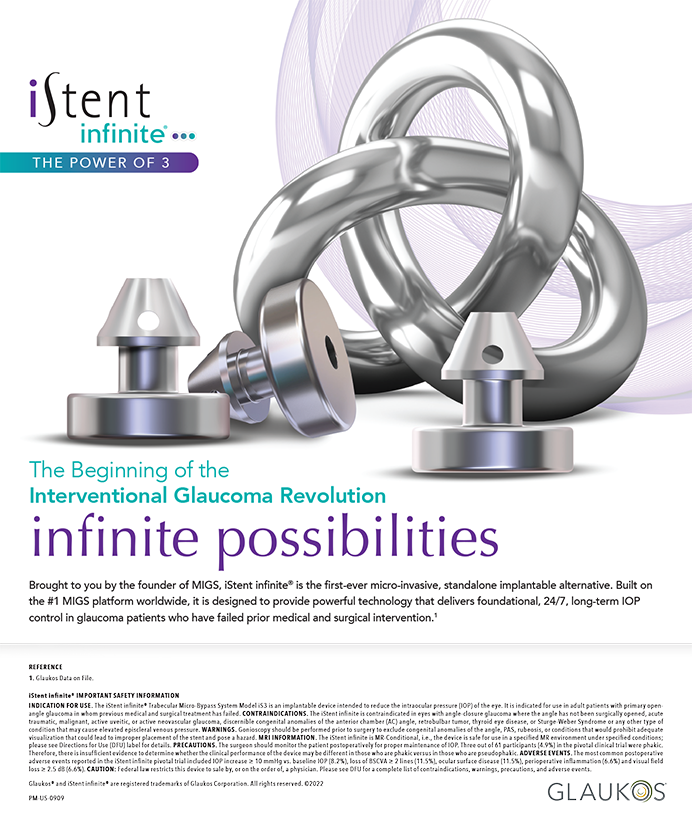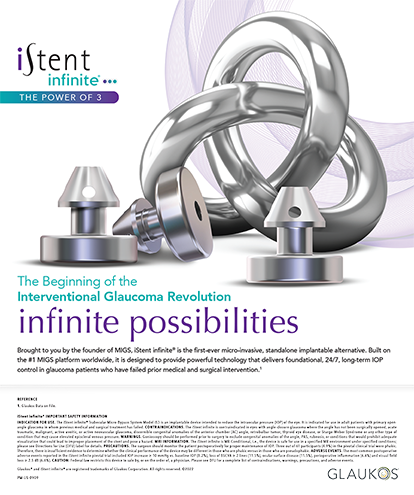The advent of silicone for the use of irrigation and aspiration (I/A) tips was a major advancement in the safety and efficiency of cataract surgery. Now, a new generation of soft I/A tip made completely out of silicone, the fixed-position silicone tip from Alcon Surgical (Fort Worth, TX), improves on the performance, durability, and cost effectiveness of pioneering models.
SAFER, YET MORE AGGRESSIVE I/A
The fixed-position silicone tip provides up to 10 uses per tip, and attaches to a standard reusable handle. The tip itself, made completely of silicone, is 12 mm in length and is available in two designs, angled and straight. I feel that both designs have similar durability and usefulness in the eye, and I use both in my practice. The tip's port is closer to the distal end, allowing for more aggressive I/A of cortical material, and the end is tapered. This design enables port-down cortex removal with reduced risk of capsular rupture. Additionally, the tip can be used for both I/A and capsule polishing.
A major advantage of the silicone I/A tip is that its silicone material is friendlier to the implant and ocular structures, particularly the wound edges. Under an electron microscope, the silicone has a smoother surface compared to the metal tip, which has a knife-like effect on the tissue (Figure 1). The silicone material is also beneficial in cases of no-suture cataract incisions, during which entering and exiting the eye can disrupt the wound edge.
TESTING THE TIP'S PERFORMANCE
We performed studies using cadaver eyes at the Storm Eye Institute in Charleston, SC, comparing the silicone I/A tip with metal tips. We inserted both the fixed position silicone tip and a metal tip port-down, and measured the amounts of vacuum pressure they each created inside the eye while aspirating to determine at what point the capsule would rupture.
Even when examining typical vacuum levels, the metal tip broke more than 30% of its capsules, and ruptured capsules at vacuum rates as low as 50 to 60 mm. By contrast, the fixed-position silicone tip was friendly to the capsule, even at pressures in excess of 600 mm Hg. The capsular rupture rate of the silicone tip using a low flow rate was near zero, and using a high flow rate remained at 15%.
Gary E. Luffey, MD, FAAO, is in private practice at the Green Clinic in Ruston, Louisiana. He is also Assistant Clinical Professor at the Louisiana State University Hospital in Shreveport. Dr. Luffey may be reached at (318) 251-6361; gluffey@cox-internet.com

